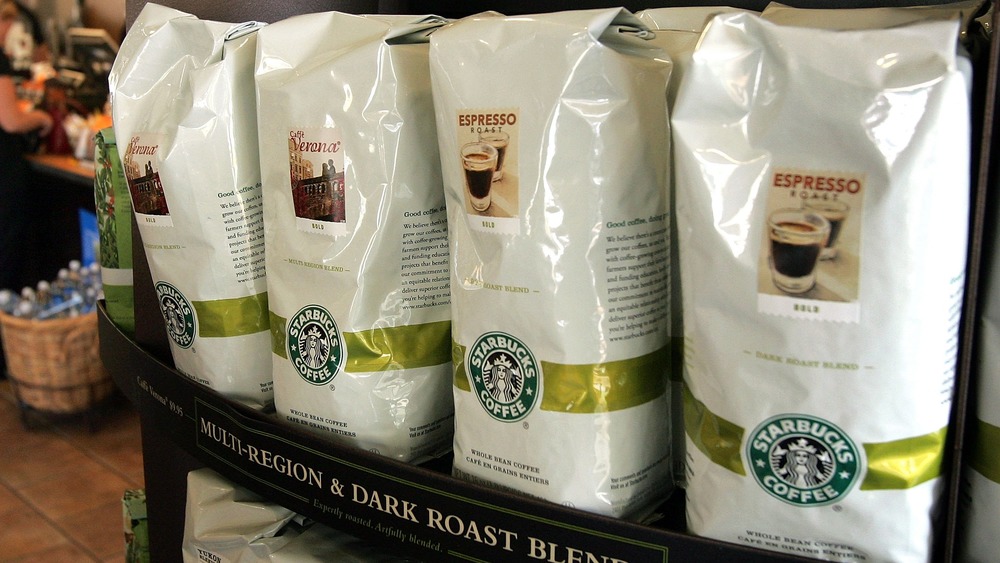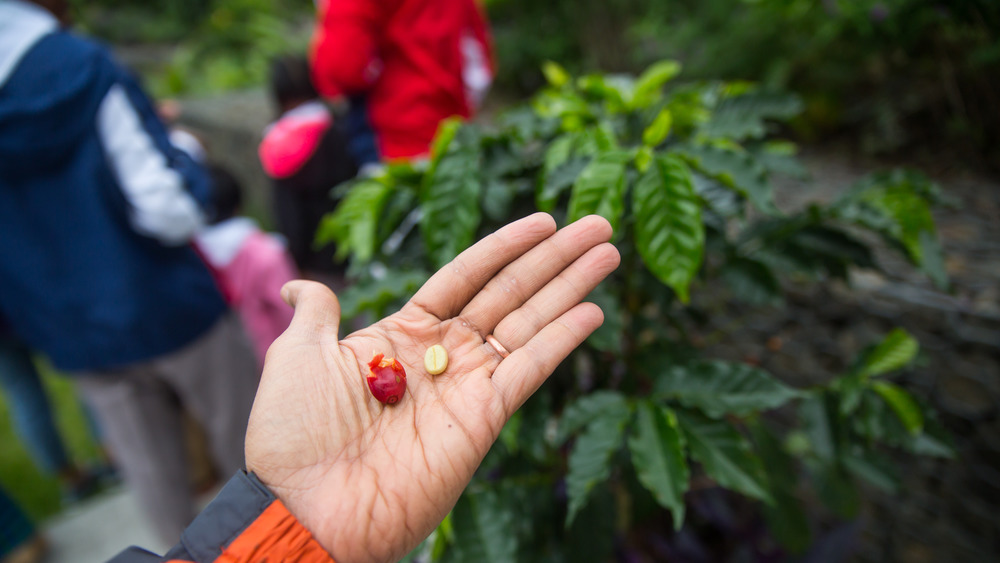Starbucks Is Trying To Make Its Coffee Carbon Neutral. Here's How
Starbucks may be king of coffee — along with secret menus filled with "pink drinks" and mermaid Frappuccinos. But if climate change has its way with coffee production, it won't be for long. There's no doubt that climate change has already done significant damage to the industry. Food & Wine recently reported on an epic battle between climate change-induced coffee rust and Hawaii's coffee farms. In 2012, farmers in Mexico, Central, and South America fought and lost the same battle. In its aftermath, the disease damaged crops in over 70 percent of coffee plantations in certain Central American countries.
Rising temperatures, unusually strong winds, and hurricanes are also diminishing crop yields in places like Nicaragua. There, according to The Christian Science Monitor, farmers are increasingly diversifying crops to avoid disaster if coffee harvests disappoint. It's a smart strategy, especially considering that, according to the journal Climatic Change, climate change may eventually cut coffee-cultivatable lands in half, globally.
But it could be bad news for Starbucks unless the coffee chain finds ways to sustainably produce its coffee beans. According to CNBC, Starbucks is doing just that. At a recent shareholder meeting, Starbucks announced a strategy to make all of its green coffee (it's coffee beans, pre-roasting) carbon neutral by 2030.
How Starbucks wants to make coffee farming greener
For Starbucks, the road to carbon-free coffee beans isn't only about planting more trees to offset emissions or pouring money into agroforestry (which it does). It's about investing in greener, more efficient farming practices. And that, in turn, means tech. There's an app that some of Starbucks' smallholder farmers are testing which measures the health of their farm's soil in an effort to optimize emission-heavy fertilizer usage (via Fast Company). Then there's the coffee chain's commitment to cultivating climate-resistant coffee trees, research it shares with farmers worldwide (via Environment + Energy Leader). Starbucks uses a farm in Costa Rica to test new coffee tree varieties, with the hopes of maximizing the amount of coffee grown on a plot of land, and thereby lowering carbon emissions.
The coffee giant's 2030 goal to make all of its green coffee carbon neutral is part of the company's promise to become "resource positive." In 2020, Starbucks committed to reducing its carbon emissions, in both direct operation and its supply chain, by 50 percent over the coming decade (via Starbucks Stories & News). It also committed to cutting the waste it sends to landfills in half, and that's a big ask. Fortune reports that in 2018, Starbucks dumped 868 metric kilotons of trash, twice the weight of the Empire State building.

